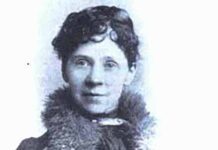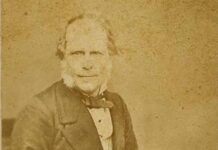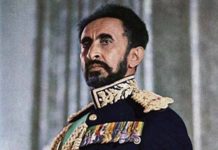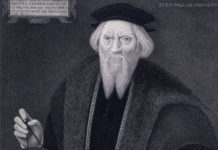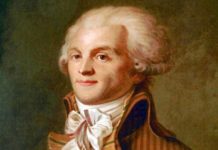Born a slave in 1818, his mistress began teaching Frederick Douglass to read until her husband stopped her. So, he self-taught, and escaped to freedom.
Writing in his third autobiography, Life and Times of Frederick Douglass, Frederick Douglass stated that he had, “lived several lives in one: first, the life of slavery; secondly, the life of a fugitive from slavery; thirdly, the life of comparative freedom; fourthly, the life of conflict and battle; and fifthly, the life of victory, if not complete, at least assured.” Frederick Douglass’ legacy lives to this day.
Frederick Douglass and Slavery
Frederick Augustus Washington Bailey, son of Harriet Bailey, a slave, and probably, although it isn’t known for certain, his white master, Aaron Anthony, was born in Talbot County, Maryland in February, 1818. Being separated from his mother, who died when he was seven, he went to live with his grandmother Betty Bailey.When Betty Bailey died, Frederick was sent to serve for Aaron Anthony at Wye House plantation, and then to work for Lucretia and Thomas Auld, who then sent him to work for Thomas’ brother Hugh in Baltimore.
While there, Auld’s wife taught Frederick the ABCs at twelve years old. However, Hugh stopped her, saying that it was dangerous to teach a slave to read. So, Frederick taught himself to read by observing other white people and then buying the book, The Columbian Orator, at age thirteen. Meanwhile, Frederick was hired out to William Freeland, then taken back from Hugh by Thomas, who sent him to work for Edward Covey, who repeatedly whipped Frederick to, “break his spirit.”
Frederick Douglass and Freedom
Frederick could tolerate the whippings no further, so he inflicted a terrible beating upon Covey, who never dared to molest Frederick again. Frederick had tried to escape several times until he finally succeeded on September 3, 1838. On that day, Frederick boarded a train at Havre de Grace, Maryland, dressed as a sailor and with papers provided by a free black seaman. He went through Wilmington, Delaware, to Philadelphia, Pennsylvania, and then, finally to New York City, all in less than a day’s journey. He then changed his surname to Douglass that same year.
Frederick finally travelled to and settled in New Bedford, Massachusetts, where he subscribed to The Liberator, a famous weekly publication of William Lloyd Garrison, an Abolitionist and lecturer. Frederick finally met Garrison at one of his meetings, told him of his life in and escape from slavery, and was then invited to speak by Garrison at his meetings all over the northern United States. Frederick overcame his shyness to become a brilliant orator starting in 1841 at the age of twenty three.
Frederick Douglass Becomes a Writer
Not only was Frederick a gifted speaker, he also began to write. In 1845, his autobiography titled, Narrative of the Life of Frederick Douglass, An American Slave, was published. At first, not many people believed that the book was written by a former slave, it was, “just too eloquent.” However, the book caught fire and Frederick had to flee to England and Ireland for fear of being arrested and sent back into slavery.
Frederick spent two years abroad lecturing and gaining more international fame. He returned to the United States in 1847 after his freedom was purchased from Thomas Auld by some friends in 1846. Douglass went on to publish two more autobiographical works, My Bondage and My Freedom in 1855, and Life and Times of Frederick Douglass in 1881. He also founded an antislavery newspaper in 1847, the North Star, which became Frederick Douglass’s Paper in 1851.
Frederick Douglass Becomes Political
In 1848, Douglass speaks at the first Women’s Rights Convention in Seneca Falls, New York. A strong relationship begins and flourishes until 1870, when Douglass supports the passing of the Fifteenth Amendment, giving blacks the right to vote, however, women were excluded. The relationship recovered after a time as Douglass resumed his support for Women’s Suffrage.
Before and during the Civil War, Frederick Douglass was involved with the Underground Railroad, broke with William Garrison because of a more political rather than moralistic drive to end slavery, supported and met with Abraham Lincoln to discuss emancipation strategies, and recruited one hundred members for a black military regiment to fight the South.
After the war he met with Andrew Johnson to promote black rights, supported Ulysses S. Grant for the presidency, was appointed secretary of a commission to Santo Domingo by Grant, was appointed marshal of the District of Columbia by President Rutherford B. Hayes, and was appointed recorder of deeds for the District of Columbia by President James Garfield.
The Legacy of Frederick Douglass: Slavery to Freedom
The intellectual, oratory, writing, and political skills of Frederick Douglass exemplifies the courage, determination, intelligence, and integrity of a man who refused to be subject to a system that considered him inferior. He struggled against and became victorious over slavery to prove to his people and the world that no man has the right to own and subjugate another. His life paved the way for the Civil Rights Movement and Dr. Martin Luther King, Jr. He will live in American History as a true hero for truth, justice, and freedom.
Some famous quotes by Frederick Douglass follow:
- A gentleman will not insult me, and no man not a gentleman can insult me.
- A little learning, indeed, may be a dangerous thing, but the want of learning is a calamity to any people.
- I prayed for twenty years but received no answer until I prayed with my legs.
- If there is no struggle, there is no progress.
- It is easier to build strong children than to repair broken men.
- No man can put a chain about the ankle of his fellow man without at last finding the other end fastened about his own neck.
- One and God make a majority.
Source:
- Written By Himself, With an Introduction and Notes by O’Meally, Robert G. Narrative of the Life of Frederick Douglass, an American Slave. NY: Barnes & Noble Books, 2005.



